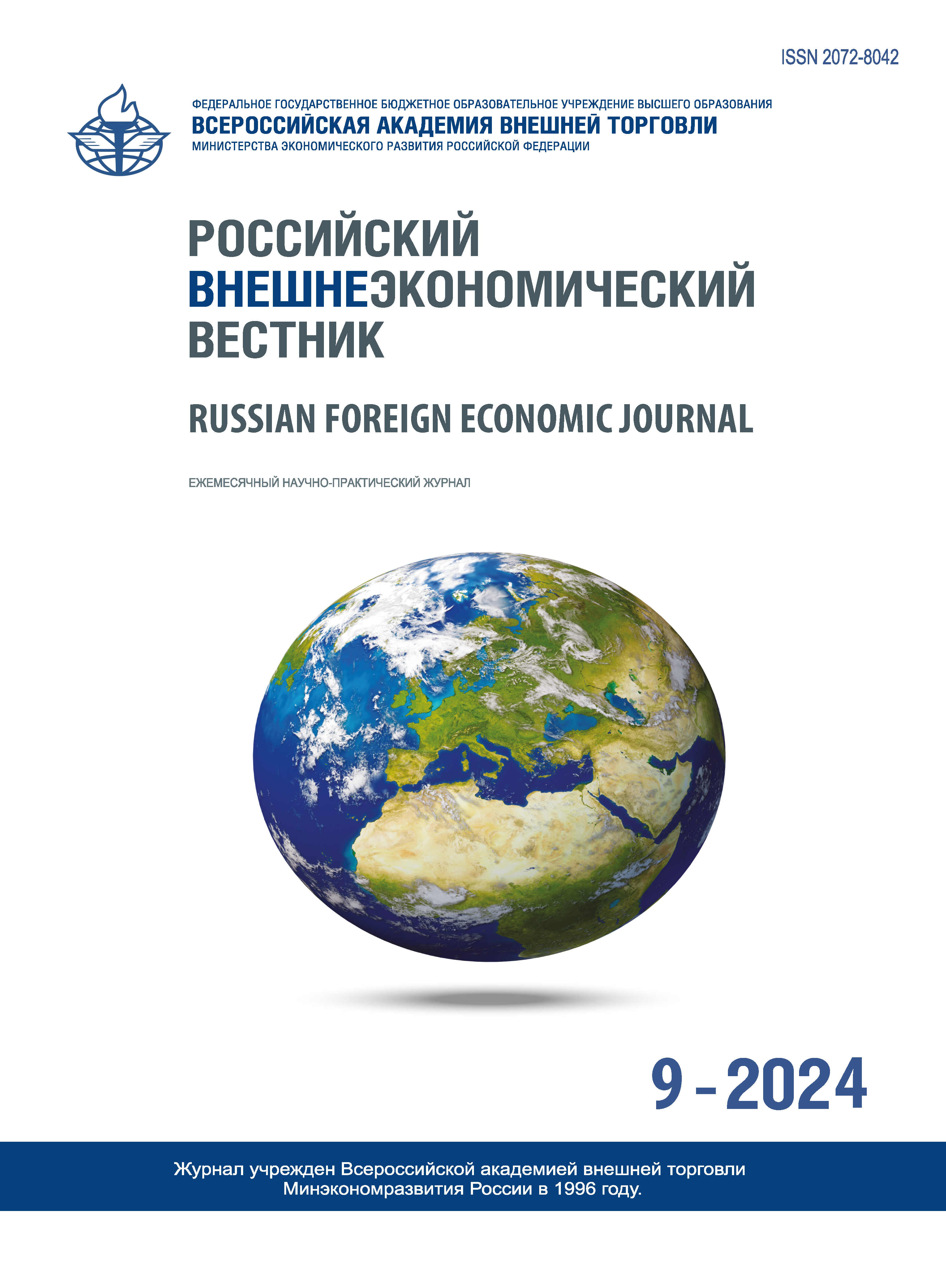Regional Integration and Value Chains in East and Southeast Asia
DOI:
https://doi.org/10.24412/2072-8042-2024-9-77-89Keywords:
Pacific Asia, regional integration, non-tariff barriers, value chains, VAC, global value chains, GVC, regional value chains, RVC, mega-regional agreementsAbstract
Regional integration in Pacific Asia has accelerated markedly since the mid-2000s, slowing temporarily during the COVID-19 pandemic. A significant role in this process is played by value added chains (VAC), which act as a stimulator of production and trade relations in the region. Global value chains (GVCs), on the one hand, allowed Asian countries to accelerate the development of a new model of international trade based on high competitiveness, and on the other, limited them to the development of industries determined by international transnational companies. The future of international trade value chains is likely to reflect Asian countries’ focus on developing trade in higher value goods and services, with a growing emphasis on technology-intensive products. Further integration of countries in the region, as evidenced by the Trade Complementarity Index, could create greater opportunities to improve efficiency, productivity and competitiveness in regional and global markets. Under these conditions, GVCs are gradually reformatted and partially lose their global character, and the importance of mega-regional value chains increases.
Downloads
Published
Versions
- 2024-12-17 (4)
- 2024-11-12 (3)
- 2024-11-02 (2)
- 2024-10-10 (1)
How to Cite
Issue
Section
License
This work is licensed under CC BY-NC 4.0





